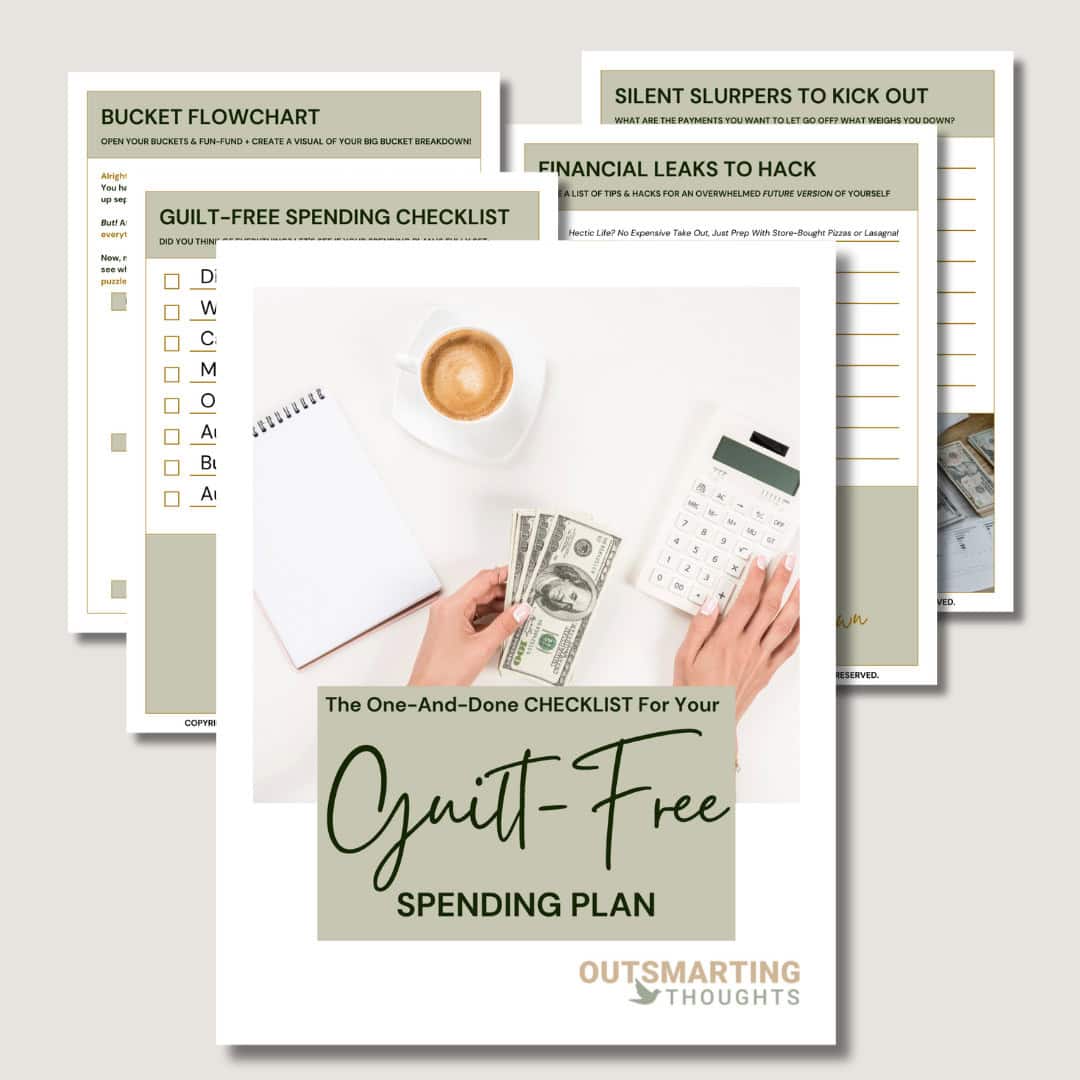Wanna know how impulse buying theory is the secret weapon mass marketing masterminds use to keep you stuck playing small? This post is dedicated to ripping the curtain back and exposing exactly how different types of impulses hijack your brain, so you can FINALLY take your power back.

You’ve felt that sting before: the guilty shopping bag sitting in the corner, the what the hell was I thinking moment as your bank balance drops. It’s not that you’re reckless. It’s that the system is engineered to nudge, trigger, and seduce you into playing a game that was never designed for your full potential. And if you’re an overachiever, you’ve probably beaten yourself up harder than most; because pride told you you should have known better.
What you’re going to learn is that impulse buying has layers. There are four different types that researchers like Stern identified decades ago, and marketers have perfected the art of pulling those levers ever since. When you can spot them in action, you can outsmart them strategically instead of getting dragged into the self-doubt roundabout again and again.
After you have learned to decode these four types, you’ll be able to cut through temptation like a pro, keep your money aligned with what actually resonates with you, and build kick-ass confidence that you are in the driver’s seat of your financial life. That clarity translates into more freedom, more self-respect, and the thrill of living life intentionally rather than by accident.
This post is all about impulse buying theory, so you can stop half-assing your life and start outsmarting every trigger that’s been holding you back.
Impulse Buying Theory
Psychologists call it impulse buying theory, and Stern’s 1962 framework is still the most practical way to decode why you buy what you buy. He broke it into four categories: pure impulse, reminder impulse, suggestion impulse, and planned impulse.
Each of these works like a trapdoor your brain can fall through. Pure impulse is that wild-card dopamine hit when you grab something random. Reminder impulse is when you see toothpaste on the shelf and realize you’re out. Suggestion impulse happens when you spot something and suddenly imagine your life better with it. And planned impulse is when you enter a store knowing you’ll buy something, just not sure what.
When you learn to identify these patterns, you stop blaming yourself and start seeing the psychological chessboard you’re actually standing on. And that’s where your real power begins: by moving like a player instead of a pawn.
Pure Impulse: The Wild Card Sabotage
Pure impulse buying is that moment you grab something that wasn’t on your radar at all. It feels like spontaneity. It feels like freedom. But let’s not sugarcoat it: this is where the system cashes in on your boredom, your stress, or your craving for instant fun. You didn’t wake up needing a novelty candle shaped like a dragon. But you walked out of the store with one, and the dopamine rush lasted ten minutes before regret set in.
RELATED POST:
Intentional Spending: The CEO-Mindset And AntiDote Against Overspending & Impulse Buying
What I would like you to consider is that pure impulse is marketed to your emotions, not your logic. Big brands know you want quick hits of excitement because your life already runs at 200%. Overachievers and overthinkers don’t usually crave stuff, but relief from pressure. That’s exactly why this type of buying can feel like rebellion, even though it’s rebellion turned inward against your own goals.
When you observe the pattern more deeply, pure impulse isn’t about weakness. It’s about the environment deliberately triggering your brain’s reward system. Once you call it out, you shift the rebellion. Instead of rebelling against your own wallet, you rebel against the machine that profits off your restless energy. That kind of rebellion is where real freedom starts; because you’re no longer playing by rules stacked against you.
Reminder Impulse: The Trap of Half-Truth Necessities
Reminder impulse buying is sneaky because it dresses up as responsibility. You see the shampoo on sale, and suddenly you remember you’re running low. Logical, right? Except marketers stage these cues precisely because they know your brain is scanning for reminders. The problem isn’t that you need shampoo. The problem is that the reminder often snowballs into extras you never planned to buy.
Overachievers fall hard for this one. You pride yourself on being prepared, so you grab three extra bottles just in case. But that’s not strategy. That’s over-prepping dressed up as productivity. And deep down, you know it.
What I would like you to consider is that reminder impulses are valid. BUT. They need boundaries. The solution isn’t to avoid stores. It’s to define your list before you enter and treat it like a mission, not a stroll. That’s how you cut through staged reminders and keep control in your hands.
Owning a cashflow strategy is a skill that’ll give you some serious advantages in life. I think budgeting is an aligned action with taking life seriously, and I seriously believe life will reward you for it. If you’re not into high-maintenance strategies like ‘tracking your spending’ and just want to sit down ONCE to direct your financial future, our Guilt-Free Spending Plan Printable is the right cashflow strategy for you! Don’t let anybody outsmart you out of your own money and start budgeting today by simply filling out the form below:

Want a free
ONE-AND-DONE CHECKLIST for aGUILT-FREE SPENDING PLAN? Free up your bandwidth and stop overthinking with this
FREE One-And-Done Checklist for your Guilt-Free Spending Plan!
Simply fill out the form below to get this strategy
delivered straight to your inbox!
Suggestion Impulse: The Seduction of Imagination
Suggestion impulse buying is when your imagination hijacks the driver’s seat. You didn’t need that blender, but then you saw the display with fresh fruit smoothies and suddenly pictured yourself hosting Pinterest-worthy brunches. In your mind, buying the blender became a ticket to a new identity. This is where mass marketing pulls its most powerful trick: selling you a vision of yourself you don’t actually live.
RELATED POST:
How To Stop Overspending: The Strategy You NEED To Regain Control (Without The Self-Blame Spiral)
When you observe the pattern more deeply, suggestion impulse isn’t about items. It’s about longing. You want alignment, excitement, and growth. That’s what makes these purchases so damn tempting. They’re dressed up as self-improvement. But here’s the twist: buying isn’t building. If you want the brunch life, you need to create the habit, not just buy the blender.
Overthinkers, especially, fall for suggestion impulses because imagination is your playground. You don’t just see the blender. You see a version of yourself that’s healthier, more disciplined, more social. But let’s move past fluff & flaky wishful thinking: self-actualization doesn’t come from gadgets. It comes from committing to what resonates with you long-term. And once you train your eye to spot suggestion triggers, you stop handing your growth to a product and start owning it yourself.
Planned Impulse: The Permission Slip to Drift
Planned impulse buying sounds less dangerous because you told yourself you’d pick up something. Maybe you walked into Target knowing you’d “treat yourself.” But here’s the trap: permission without strategy turns into drift. You justify the cartload because you technically “planned” to spend. That’s how you end up with five random items that don’t add real value.
What I would like you to consider is that planned impulse isn’t about treating yourself, but about outsourcing your strategy to the store. You let their layout, discounts, and scarcity tactics decide what your “treat” looks like. That’s not freedom. That’s guided drift disguised as choice.
Overachievers especially need to hear this: you don’t owe yourself random spending to prove you’re working hard. You owe yourself rewards that align with your actual goals. That’s the whole philosophy of not half-assing life. If you’re going to spend, spend on experiences, resources, and adventures that genuinely push you forward instead of leaving you in a self-doubt roundabout. Planned impulse becomes powerful when you flip it. Instead of drifting, you deliberately design your treat list. That way, your planned impulse is a strategic rebellion. Not a detour into regret.
Impulse Buying Theory (Summary)
Psychologists explain impulse buying theory through Stern’s four categories: pure impulse, reminder impulse, suggestion impulse, and planned impulse. Each one is a different way your emotions override logic, and your environment nudges you into spending. Once you spot the difference, you can reclaim clear-headed rationality.
The key strategies from this post are simple but powerful: notice when the urge is about rebellion or relief, set clear missions before shopping, question whether purchases are building habits or just buying visions, and design your rewards with intention instead of drifting into store-led spending.
Picture this: you walk into a store with clarity, knowing what’s a trap and what’s aligned. You buy intentionally, walk out lighter in pride instead of guilt, and invest your money where it actually fuels your self-actualization. That’s what it feels like to flip the script. And sincerely, you can DO IT!
I wish you the absolute best stepping into this rebellion against mass marketing masterminds. Go grab life by the horns, stop half-assing your potential, and show yourself that you can outsmart every trigger in your path.
This post was all about impulse buying theory, so you can stop half-assing your life and start outsmarting every trigger that’s been holding you back.
We aim to help you out as much as possible, but please keep in mind that the content is only for general informational and educational purposes. We offer our services based on independent research and life-experience only, and so our strategies can never serve as a substitute for professional advice. Trust me, we do not have 'everything figured out', are all still huge works in progress, but hey, what works for us, might work for you too! This is allll up for you to decide... It might not work for you, and that's okay, so cherrypick the stuff that resonates and leave the stuff that doesn't, and let's go!







